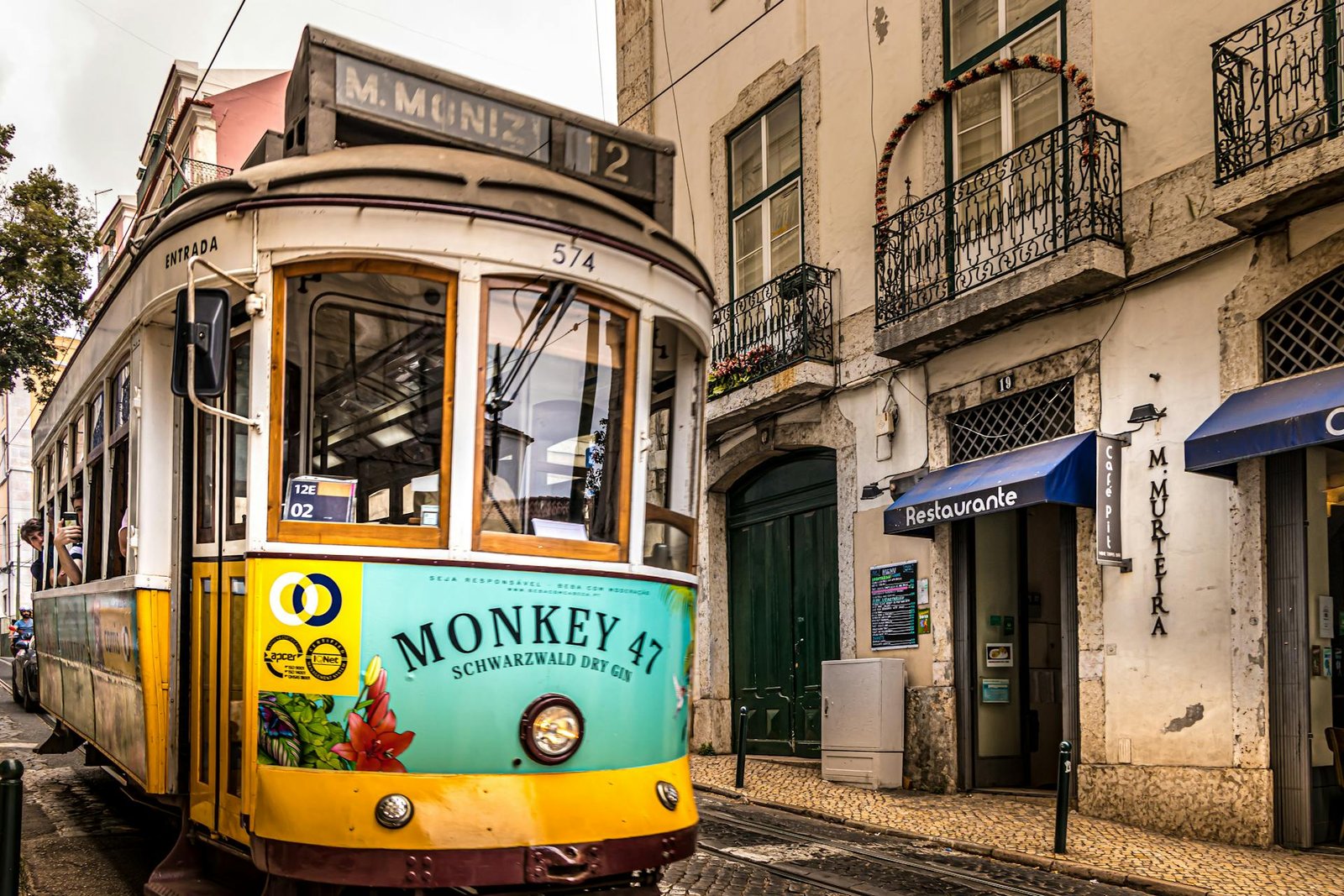Lisbon the capital of Portugal is a city filled with charm history and color, built on seven hills and facing the Atlantic Ocean, it is a place where old traditions and modern life mix together in a unique way. Many travelers fall in love with its narrow streets, tiled buildings, and warm light. Visiting Lisbon is more than checking off famous spots; it is about enjoying the slow rhythm of the city and getting a feel for its culture.
This guide shows you what to see and do in Lisbon, whether you are here for a short visit or a longer stay.
The Old Streets of Alfama
Alfama is the oldest district in Lisbon and one of the most charming areas to walk through. Its narrow streets, small squares, and colorful houses create a maze that feels like stepping back in time. The area survived the great earthquake of 1755, which destroyed much of the city, so its streets still show the old character of Lisbon.
When walking in Alfama, you will often hear the sound of fado, a traditional Portuguese style of music that speaks of love, longing, and daily life. Many small restaurants and bars here host live fado shows in the evening, giving you a chance to experience this deep cultural tradition.
The São Jorge Castle sits at the top of Alfama, offering one of the best views of the city. From here, you can see the red roofs, the river, and the hills that shape Lisbon.
Baixa and Chiado
After exploring Alfama, head to Baixa, the downtown area of Lisbon. This part of the city was rebuilt after the 1755 earthquake in a more organized style, with wide streets and large squares. Praça do Comércio, a square facing the Tagus River, is one of the most impressive places in the city. With its arcades, yellow buildings, and the grand Arco da Rua Augusta, it is a symbol of Lisbon’s recovery and strength.
Nearby is Rua Augusta, a lively pedestrian street full of shops, cafes, and street performers. Walking here gives you a sense of the city’s energy.
Chiado, just above Baixa, is a neighborhood known for its historic cafes, theaters, and bookshops. It has long been a meeting point for artists, writers, and thinkers. Café A Brasileira, with its statue of poet Fernando Pessoa outside, is one of the most famous spots in the area.
Belém and the Age of Discovery
Belém is one of the most important areas for understanding Portugal’s history. During the Age of Discovery, explorers like Vasco da Gama and Ferdinand Magellan set sail from here to discover new lands. Today, you can see monuments that celebrate this period.
The Belém Tower, standing by the river, once protected the city from invaders. The Jerónimos Monastery, built in stunning Manueline style, is another highlight. Both are UNESCO World Heritage Sites and show the glory of Portugal’s past.
While in Belém, do not miss trying the famous pastel de nata, a custard tart that was first made here by monks. The Pastéis de Belém bakery still serves the original recipe, and it is a must for anyone visiting Lisbon.
Bairro Alto and Nightlife
When the sun goes down, Lisbon comes alive in Bairro Alto. This hilltop neighborhood is known for its bars, restaurants, and lively nightlife. The streets are narrow and packed with small places where you can listen to music, drink local wine, and meet both locals and travelers.
Bairro Alto is not only about nightlife. During the day, you can visit viewpoints like Miradouro de São Pedro de Alcântara, which offers a wide view of the city. This area is also full of street art and small shops, giving it a creative and youthful feel.
The Riverfront and Modern Lisbon
Lisbon has always been connected to the Tagus River, and walking along the waterfront is one of the best ways to enjoy the city. From Cais das Colunas near Praça do Comércio to the modern district of Parque das Nações, the river is always present in Lisbon’s life.
Parque das Nações is a newer part of the city, developed for the Expo 98. It is very different from the historic areas, with modern buildings, wide open spaces, and attractions like the Oceanarium, one of the largest aquariums in Europe. This part of Lisbon shows how the city is looking toward the future while still honoring its past.
Local Food and Markets
Food is an important part of life in Lisbon, and tasting local dishes is a big part of any visit. The city is known for its fresh seafood, from grilled sardines to octopus salad. Bacalhau, or salted cod, is used in many recipes, and locals say there are more than 300 ways to cook it.
For a taste of many different dishes in one place, visit the Time Out Market, a large food hall with stalls run by some of Lisbon’s best chefs. It is popular with both tourists and locals, and the variety of options makes it perfect for any time of day.
Local markets like Mercado da Ribeira or Mercado de Campo de Ourique are also worth visiting. Here you can see the daily life of the city, buy fresh fruit, cheese, and pastries, and watch how locals shop and eat.
Trams and Viewpoints
One of the most iconic images of Lisbon is the yellow tram moving up and down the steep hills. Tram 28 is the most famous, as it passes through many of the city’s historic areas, including Alfama, Baixa, and Estrela. Riding it is both practical and fun, though it can get crowded, especially in summer.
Because Lisbon is built on hills, it has many viewpoints, or miradouros, where you can stop and admire the view. Some of the best include Miradouro da Graça, Miradouro da Senhora do Monte, and Santa Justa Lift, a unique elevator that connects Baixa with the higher streets.
Day Trips from Lisbon
If you have more time, there are many great day trips you can take from Lisbon. Sintra is one of the most popular, with its fairy-tale palaces and lush gardens. The colorful Pena Palace and the mysterious Quinta da Regaleira are highlights.
Cascais, a seaside town about 30 minutes away, is perfect for a relaxing day by the ocean. Its beaches, marina, and calm atmosphere make it a favorite escape from the city.
Another option is Évora, a historic city in the Alentejo region, known for its Roman temple, cathedral, and medieval streets. Visiting here gives you a deeper look into Portugal’s long history.
Tips for Your Visit
Lisbon is a safe city, but like in any big place, keep an eye on your belongings, especially in crowded areas and on trams. Walking is the best way to explore, but the hills can be steep, so wear comfortable shoes.
The city is known for its sunny weather, but evenings can be cool, especially near the river, so bringing a light jacket is a good idea. Learning a few Portuguese words like “bom dia” (good morning) and “obrigado” (thank you) makes a good impression with locals.
Conclusion
Lisbon is a city that mixes old and new, tradition and modern life, calm streets and lively squares. In one visit, you can explore historic districts like Alfama, admire the grand squares of Baixa, enjoy the riverfront, and taste food that locals have loved for centuries.
What makes Lisbon special is not only its history or its sights but also the feeling of walking through its streets, hearing music in the air, and sharing moments with friendly people. A trip here leaves you with warm memories and often a wish to return.




